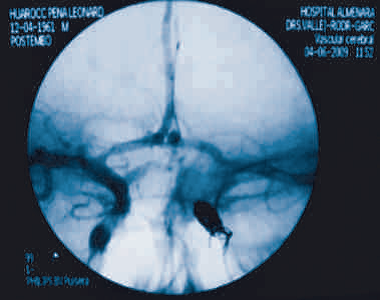Usted está aquí
Peruvian Journal of Neurosurgery
Carotid trapping as treatment for giant cervical carotid aneurysm
ABSTRACT
The extracranial internal carotid artery (EICA) aneurysms are very rare vascular lesions. There are series reporting incidences from 0.3 until 2% on all peripheral arterial aneurysms. Etiology has changed over the past century, from infectious cause or mycotic (tonsillar abscess and/or late manifestations of syphilis) to be less common than atherosclerotic or traumatic cause. Spontaneous dissecting cause is rarer still. Anticoagulation as first-line treatment is recommended for not broken EICA. Surgical management has been the only one method of treatment for broken EICA in the last 100 years, but was limited in those aneurysms with distal extension to the skull base. Nowadays, new technologies such as endovascular technique through the placement of stents, coils and carotid trapping are shown as alternatives for this difficult disease. We report a 44 years old man with left giant carotid cervical aneurysm, who was undertaken to carotid trapping in our hospital.



